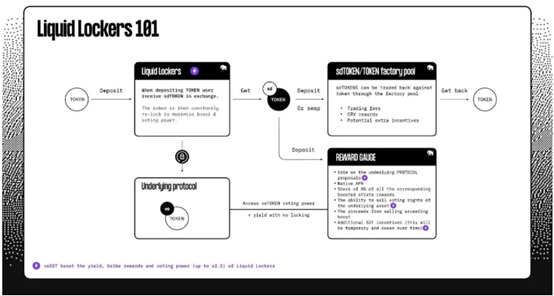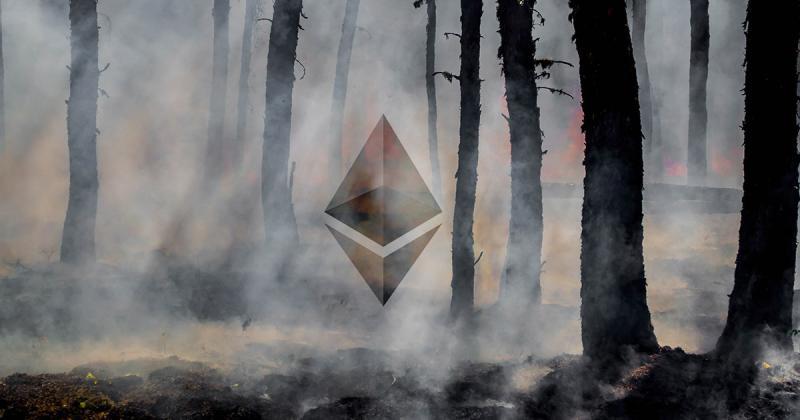What important information should be noted from EthCC5 Ethereum Community Conference?
Original Title: “What You Missed From EthCC”
Author: Donovan Choy, Bankless
Compiled by: PANews
Last week, the Ethereum Community Conference EthCC5 was held in Paris, France, with many big names in the crypto space, including Ethereum co-founder Vitalik Buterin, attending and speaking at the event. Let's quickly review the key points from this conference.
Before diving into the main topics, we want to give a shout-out to the organizers for thoughtfully providing attendees with free macarons, POAP (Proof of Attendance Protocol), and oversized fans to cope with the heat.

There was also a "big gift bag" with the EthCC5 logo.

1. Infrastructure
1. Ethereum is only 55% complete
On the last day of the conference, Ethereum co-founder Vitalik Buterin gave a talk on the progress of Ethereum's merge and its future roadmap. He stated that Ethereum is currently in a phase of rapid protocol changes to enhance capabilities, but will eventually stop making rapid changes to the protocol to prevent market and overall construction volatility, while leveraging systems like L2 to add more functionality to the Ethereum ecosystem. In other words, L1 will be used for security and reliability, while L2 will be used for rapid iterative operations. He mentioned the "functionality escape velocity theory": once L1 is strong enough, the rest can be left to L2. Developers need to take breaks, and new features require time to reduce risks.
When discussing how far Ethereum is from its goals, Vitalik Buterin said: "The difference between Bitcoin and Ethereum is that Bitcoin users believe Bitcoin is 80% complete, while Ethereum users believe Ethereum is only 40% complete… What I want to say is that after the merge, this metric for Ethereum will reach 55%. So we are getting closer to our goals, and on this long and great journey to realize this vision, we are already halfway through."
Further reading: Vitalik's speech at ETHCC: Thoughts on Ethereum's development roadmap and long-term future
You can view the transcript of Vitalik Buterin's speech here.
2. Zk-Rollups are coming
It must be acknowledged that DeFi has put a lot of effort into zk-rollup technology.
At this conference, the Polygon team announced a joint launch of zkEVM with zkSync and Scroll, which is a scaling solution that combines zk-rollups with EVM compatibility, marking a significant breakthrough that should not be underestimated.
Due to the complexity of zk-rollup technology, developers have found it challenging to build projects on this basis until now. However, with the launch of zkEVM, developers can more easily leverage this emerging technology to create smart contracts.
Further reading: Detailed explanation of Polygon zkEVM: Aiming to scale Ethereum to a billion users
3. DeFi user experience needs improvement
While Ethereum Layer 2 is busy improving transaction speeds, many other DeFi builders are focused on enhancing user experience in a multi-chain world.
Daniel Yanev, co-founder of the one-stop DeFi platform rhino.fi, believes that user experience in DeFi is crucial in a multi-chain world. As DeFi continues to innovate rapidly, it has become very complex, "Users are not stupid; their experience is terrible." Simplifying operations and optimizing user experience is what they are currently working on.
Now, in addition to rhino.fi's efforts to optimize decentralized finance experiences, the DeFi aggregation platform deBridge introduced cross-chain composability features at the ETHCC5 conference. Additionally, Mounir Benchemled, founder of another DeFi aggregation platform Paraswap, also discussed how they are enhancing the DeFi user experience at the conference.
2. DeFi
1. The value of veToken is highlighted
It can be said that Curve has sparked a new paradigm of "meta-governance" veTokenomics by allowing users to lock veTokens to increase yields and governance rights, making governance tokens more valuable, although this model comes at the cost of liquidity.
The DeFi yield optimization platform Stake DAO is an important participant in the Curve War. Last week, they announced that liquidity lockers could use their veTokens to earn yields, SDT incentives, and governance voting rights without restrictions, thereby enhancing the value of veTokenomics. This feature is now live and supports four tokens: CRV, FXS, ANGLE, and BAL.

2. Cosmos DeFi is gaining attention
Although ETHCC is an Ethereum conference, the content of the conference is not limited to Ethereum.
At the conference, Sunny Aggarwal, co-founder of Osmos, explained why cross-chain DeFi like Cosmos is becoming increasingly attractive. There are many reasons for this, such as customizable fee parameters (fees can be paid with any token and vary based on different types of transactions), customizable execution models (experimenting with different virtual machines and multi-asset shielded pools), self-executing code (such as batch AMM), and customizable transaction ordering.
You can view the transcript of Sunny Aggarwal's speech here.
3. DAO
1. Renewable opportunities in crypto economics
When asked, "How to create resilient Web3 systems and projects?" Kevin Owocki, founder of the open-source software platform Gitcoin, shared his views on "building a self-repairing new world through renewable crypto economics."
You can view the transcript of Kevin Owocki's speech here.
2. Retroactive public goods funding (RetroPGF)
At the conference, Karl Floresch, CTO of Optimism, a provider of Ethereum scaling solutions, gave a vivid talk on retroactive public goods funding, sharing Optimism's vision: to profit from public goods projects, they will combine positive impacts on Web3 with individual rewards.
You can view the transcript of Karl Floresch's speech here.
3. Challenges in DAO governance
At this conference, Doo Wan Nam from Stablenode discussed some challenges and practical experiences faced in DAO governance, while Ivan Fartunov, ecosystem lead from Aragon DAO, delved into how infrastructure addresses these challenges.
Their talks revealed an often-overlooked fact: governing a DAO is not easy, as it involves a high degree of uncertainty and a host of risks.
You can view the transcript of Doo Wan Nam's speech here.
You can view the transcript of Ivan Fartunov's speech here.
4. Culture
1. The era of Web3 social is here
Stani Kulechov, founder and CEO of Aave and Lens, is leading the development of decentralized social media. Lens is a decentralized social media underlying protocol built on Polygon, characterized by its open-source and composable nature, breaking our traditional understanding of "social media." Given its open-source and composable nature, this product does not need to build a foundational user base and can directly absorb users from other products.
You can view the transcript of Stani Kulechov's speech here.
2. Ethereum goes to Hollywood
The bestselling book "The Infinite Machine," which tells the story of Ethereum's growth, will be adapted into Ethereum's first Hollywood film. The book's author, Camila Russo, and co-producer Alejandro Miranda are currently writing the script. It is reported that the film will be financed through the sale of a series of NFTs. Interestingly, since this is a film about Web3, the production of the film itself is closely tied to Web3, and the NFT minters will also appear in the film.
You can view Alejandro Miranda's thoughts on the film here.
3. NFTs are key to distributing community ownership
Finally, Tom Borgers, founder of 3mint, discussed how NFTs have become a luxury speculative commodity. However, he believes that ultimately, true ownership of NFTs will be granted to loyal users and communities, evolving into a reliable vehicle for commercial brands and content creators to acquire customers and fans.
You can view the transcript of Tom Borgers' speech here.
5. Conclusion
The week of EthCC5 was bustling, and it seemed that people were not fully satisfied; if you didn't know the market conditions, you wouldn't feel that everyone was in a bear market. We are pleased to see that cryptocurrencies are advancing at an unprecedented pace. As the saying goes, "No pain, no gain," we can view the current bear market as a solid foundation for the next bull market, preparing for better development in the future.








